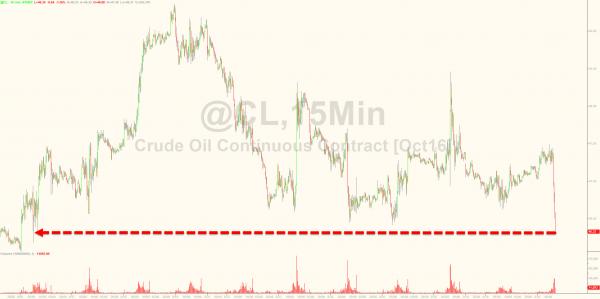Oil prices enjoyed a bump last week, thanks in part to a weakened dollar and some geopolitical tensions in the Persian Gulf. But a large factor in the recent rally has been the return of a possible OPEC production freeze, a subject that was last tossed around before the organization’s much-publicized, and ultimately unproductive, meeting in Doha last April. The likelihood of a freeze sent markets up on Thursday, though some less-than-confident comments from the Saudi oil minister sent them dropping back on Friday.
And we noted previously, the short squeeze ammo has been eviscerated in oil, disabling (for now) the ‘freeze’ headline risk…

Whether a freeze occurs or not is likely to be the trending gossip among speculators for the next month, at a time when such talk is exerting greater-than-average pull on the crude price, but as OilPrice.com’s Gregory Brew notes, a question worth asking is whether a freeze is even possible, given the state of OPEC and the increasingly divergent interests of its fourteen members.
This new attempt at a production freeze comes as Saudi Arabia, OPEC’s largest producer and de facto leader, reaches a new production record of 10.67 million barrels, more than 400,000 more than when the last freeze was discussed, while its oil revenues continue to plummet. OPEC profits have fallen 55 percent since 2014, according to the EIA. Ecuador, Kuwait and other Gulf producers want the price to recover past $50 a barrel. If a production freeze is on the cards, it will be discussed in late September during an informal meeting of the OPEC states at the International Energy Forum in Algeria.
Iraq and Iran, OPEC’s number two and three producers, respectively, have offered tacit acceptance of a production freeze, with important caveats.
In the case of Iran, a freeze will not interfere with the country’s long campaign to re-capture market share, as oil minister Bijan Zanganeh made quite clear in a recent statement. The question of where, exactly, Iran’s production will reach before a freeze is open for debate. The widely-cited figure is Iran’s pre-sanctions production level of 4 million barrels, and the Iranian government has claimed that it will consider a freeze once production reaches this level.













Leave A Comment